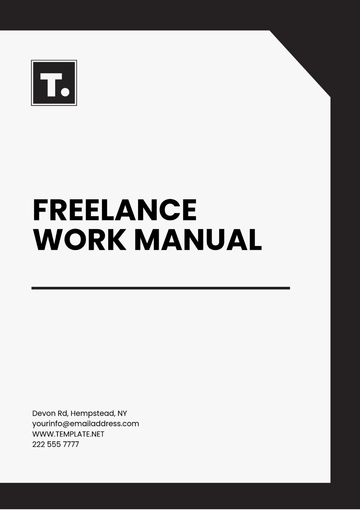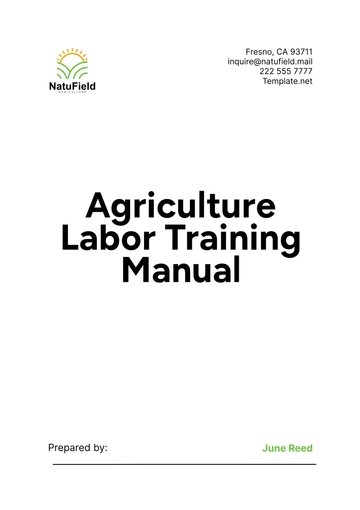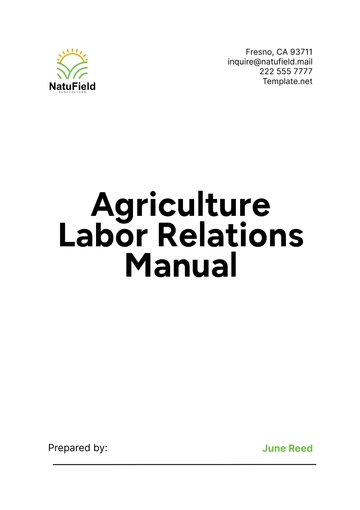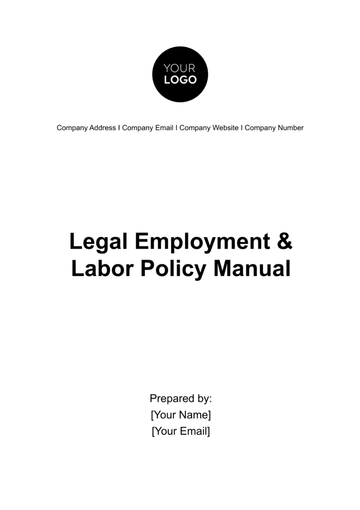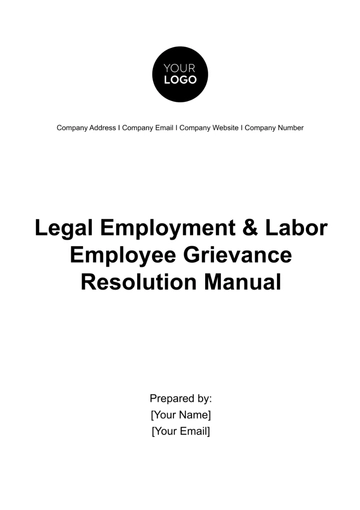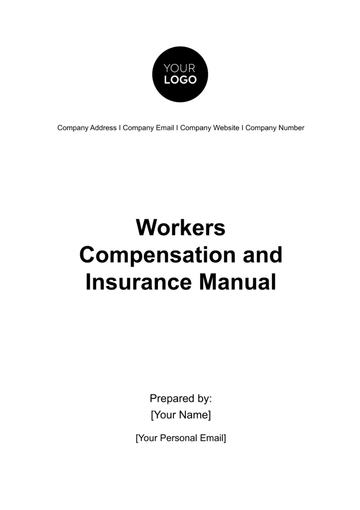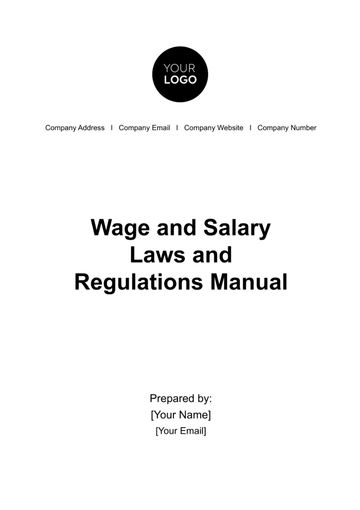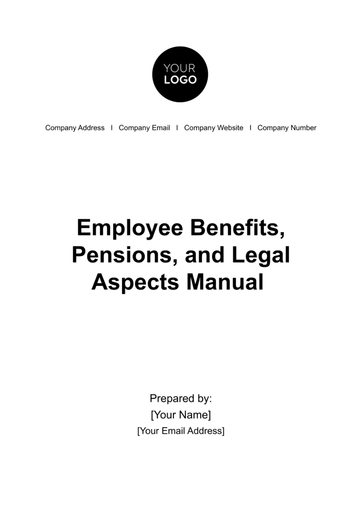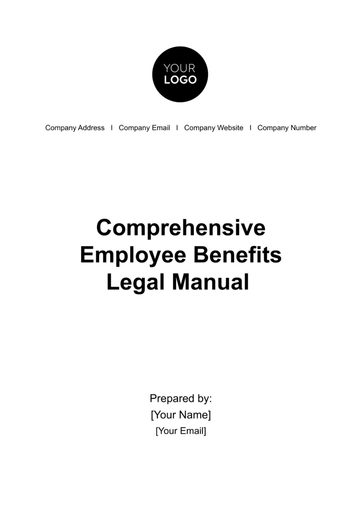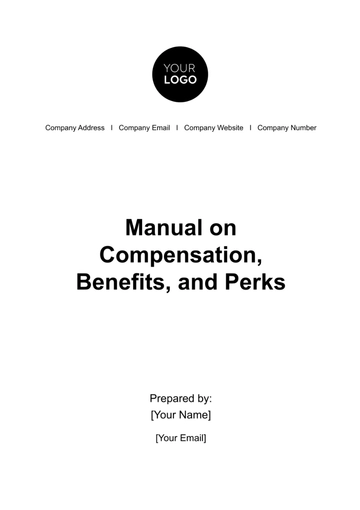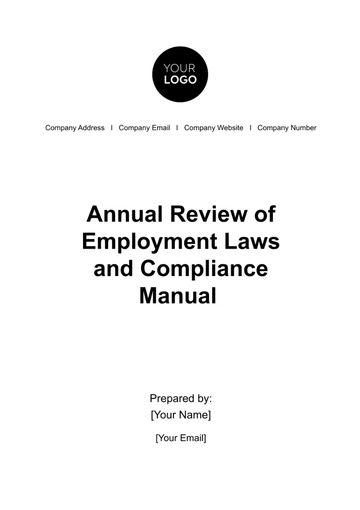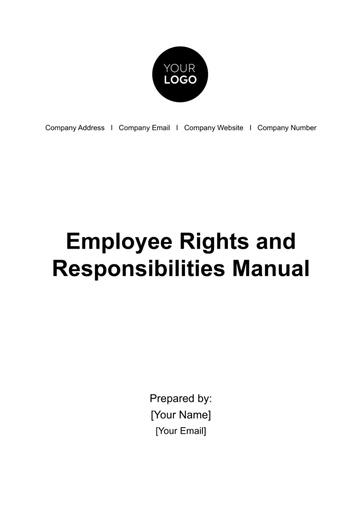Free Agriculture Labor Training Manual
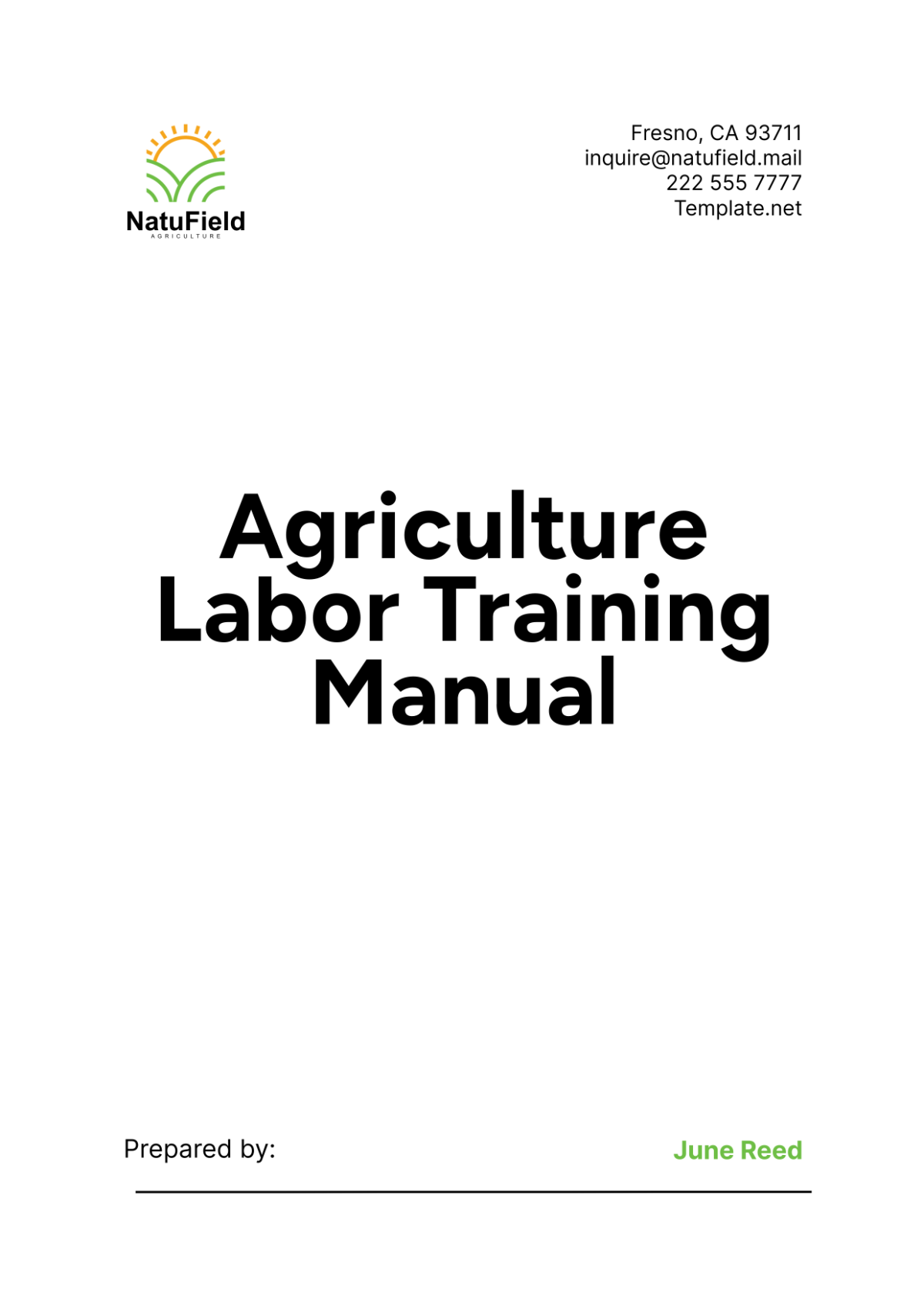
Introduction
The Agriculture Labor Training Manual is designed to provide comprehensive guidelines and procedures for agricultural employees at [Your Company Name]. This manual aims to ensure that all employees are equipped with the necessary knowledge, skills, and resources to perform their duties effectively and safely. It covers various aspects of agricultural work, including field operations, equipment handling, safety protocols, and employee development.
1. Company Overview
1.1 Mission and Vision
Mission: To produce high-quality, sustainable agricultural products while ensuring the well-being and development of our workforce.
Vision: To be a leader in sustainable agriculture, known for innovation, environmental stewardship, and a committed workforce.
1.2 Core Values
Sustainability: Commitment to environmentally friendly farming practices.
Innovation: Embracing new technologies and methods to improve productivity and quality.
Integrity: Maintaining high ethical standards in all operations.
Community Engagement: Supporting and engaging with local communities.
1.3 Organizational Structure
Objective: To provide clarity on the organizational hierarchy and reporting lines.
Position | Responsibilities |
|---|---|
CEO | Overall strategic direction and company leadership |
Operations Manager | Overseeing daily agricultural operations |
HR Manager | Managing recruitment, training, and employee welfare |
Field Supervisors | Direct supervision of field workers |
Equipment Maintenance Team | Ensuring the proper functioning and maintenance of machinery |
Administrative Staff | Supporting operational and administrative tasks |
2. Field Operations
Effective field operations are crucial for achieving high productivity and crop quality. This chapter outlines the standard procedures for planting, maintenance, and harvesting activities.
2.1 Planting Procedures
Objective: To ensure proper planting techniques for optimal crop growth.
Steps:
Soil Preparation:
Test soil pH and nutrient levels.
Remove weeds, rocks, and debris.
Till the soil to a depth of at least 6 inches.
Apply necessary fertilizers and amendments.
Seed Selection and Sowing:
Choose high-quality seeds suited for the specific crop.
Follow recommended planting depth and spacing.
Use mechanical planters or hand sow seeds evenly.
Water the soil immediately after sowing.
Irrigation:
Install and maintain irrigation systems (e.g., drip, sprinkler).
Schedule irrigation based on crop needs and weather conditions.
Avoid over-watering or under-watering.
Table: Planting Schedule
Crop | Planting Season | Optimal Depth | Spacing |
|---|---|---|---|
Corn | Spring | 1.5 inches | 6 inches apart |
Wheat | Fall | 1 inch | 8 inches apart |
Soybeans | Spring | 1.5 inches | 12 inches apart |
2.2 Crop Maintenance
Objective: To ensure the healthy growth of crops through regular maintenance activities.
Steps:
Weed Control:
Use manual or mechanical methods to remove weeds.
Apply herbicides as necessary, following safety guidelines.
Pest and Disease Management:
Monitor crops regularly for signs of pests and diseases.
Apply pesticides and fungicides as needed, following safety protocols.
Fertilization:
Conduct soil tests to determine nutrient requirements.
Apply fertilizers according to the recommended rates and schedules.
2.3 Harvesting Procedures
Objective: To harvest crops efficiently and maintain product quality.
Steps:
Harvest Planning:
Determine the optimal harvest time based on crop maturity.
Schedule labor and equipment needed for harvesting.
Harvesting Techniques:
Use appropriate tools and machinery for different crops.
Handle crops gently to avoid damage.
Sort and grade harvested crops according to quality standards.
Post-Harvest Handling:
Clean and sanitize storage facilities.
Store crops at recommended temperature and humidity levels.
Monitor stored crops for spoilage and pests.
Table: Harvesting Schedule
Crop | Harvest Time | Harvest Method | Storage Requirements |
|---|---|---|---|
Corn | Late Summer | Mechanical Harvester | Dry, cool, well-ventilated |
Wheat | Early Summer | Combine Harvester | Dry, cool, well-ventilated |
Soybeans | Fall | Mechanical Harvester | Dry, cool, well-ventilated |
3. Equipment Handling and Maintenance
Proper handling and maintenance of agricultural equipment are essential for ensuring safety and efficiency. This chapter provides guidelines for operating, maintaining, and storing equipment.
3.1 Equipment Operation
Objective: To operate agricultural machinery safely and effectively.
Guidelines:
Complete training on the operation of specific machinery before use.
Conduct a pre-operation inspection to ensure the equipment is in good working condition.
Follow the manufacturer’s operating instructions and safety guidelines.
Report any equipment malfunctions or safety hazards immediately.
3.2 Routine Maintenance
Objective: To maintain machinery in good working condition to prevent breakdowns and extend lifespan.
Steps:
Daily Maintenance:
Check oil and fluid levels.
Inspect tires and tracks for wear and tear.
Clean machinery to remove dirt and debris.
Weekly Maintenance:
Lubricate moving parts.
Inspect and tighten bolts and screws.
Check and replace air filters if necessary.
Seasonal Maintenance:
Perform thorough inspections and servicing.
Replace worn-out parts.
Update software and calibrate equipment as needed.
Table: Maintenance Schedule
Equipment | Daily Tasks | Weekly Tasks | Seasonal Tasks |
|---|---|---|---|
Tractor | Check fluids, clean exterior | Lubricate parts, inspect tires | Full inspection, replace parts |
Combine Harvester | Check fluids, clean exterior | Lubricate parts, inspect tracks | Full inspection, update software |
Irrigation System | Inspect for leaks, clean nozzles | Check filters, test functionality | Full inspection, replace worn parts |
3.3 Safety Procedures
Objective: To ensure the safety of employees while operating and maintaining machinery.
Guidelines:
Always wear appropriate personal protective equipment (PPE) when operating machinery.
Never operate machinery under the influence of drugs or alcohol.
Keep hands, feet, and loose clothing away from moving parts.
Shut down machinery and disconnect the power source before performing maintenance or repairs.
4. Health and Safety Protocols
Maintaining a safe and healthy work environment is crucial for the well-being of our employees. This chapter outlines our health and safety protocols, including hazard identification, emergency response, and first aid procedures.
4.1 Hazard Identification
Objective: To identify and mitigate potential hazards in the workplace.
Steps:
Safety Inspections:
Conduct regular inspections of the workplace and equipment.
Identify potential hazards such as loose wires, slippery surfaces, and faulty machinery.
Reporting Hazards:
Encourage employees to report any hazards or unsafe conditions immediately.
Implement corrective actions to eliminate or reduce identified hazards.
Table: Common Hazards and Mitigation
Hazard | Mitigation |
|---|---|
Loose Wires | Secure wires and cover them properly. |
Slippery Surfaces | Use non-slip mats and clean spills promptly. |
Faulty Machinery | Perform regular maintenance and inspections. |
4.2 Emergency Response
Objective: To ensure a prompt and effective response to emergencies.
Steps:
Emergency Plan:
Develop and maintain an emergency response plan.
Include procedures for fire, chemical spills, and medical emergencies.
Drills and Training:
Conduct regular emergency drills and training sessions.
Ensure all employees are familiar with emergency procedures.
Emergency Equipment:
Ensure the availability of emergency equipment such as fire extinguishers and first aid kits.
Regularly inspect and maintain emergency equipment.
4.3 First Aid and Medical Assistance
Objective: To provide immediate assistance to injured or ill employees.
Steps:
First Aid Training:
Provide first aid training to designated employees.
Ensure first aid kits are easily accessible and well-stocked.
Medical Assistance:
Contact emergency medical services for serious injuries or illnesses.
Report all injuries and illnesses to the supervisor and complete necessary documentation.
Table: First Aid Kit Contents
Item | Quantity |
|---|---|
Bandages | 20 |
Sterile Gauze Pads | 10 |
Adhesive Tape | 1 roll |
Antiseptic Wipes | 10 |
Scissors | 1 pair |
Tweezers | 1 pair |
First Aid Manual | 1 |
5. Employee Development and Training
Continuous learning and skill development are essential for employee growth and the overall success of the company. This chapter details our approach to employee development, including initial and ongoing training programs.
5.1 Initial Training
Objective: To provide new employees with the foundational knowledge and skills required for their roles.
Steps:
Orientation:
Conduct orientation sessions to introduce new hires to company policies, procedures, and safety protocols.
Job-Specific Training:
Provide training on specific tasks, equipment, and best practices.
Assign experienced mentors to guide new employees through their initial training period.
Table: Initial Training Schedule
Training Topic | Duration | Responsible Party |
|---|---|---|
Company Policies | 1 day | HR Department |
Safety Protocols | 2 days | Safety Officer |
Job-Specific Tasks | 1 week | Department Supervisor |
5.2 Ongoing Training
Objective: To ensure continuous learning and skill development for all employees.
Steps:
Regular Training Sessions:
Offer regular training sessions on new technologies, techniques, and industry standards.
Encourage employees to attend workshops, seminars, and conferences.
Professional Development:
Provide access to online training resources and educational materials.
Support employees in obtaining industry-recognized certifications.
Table: Ongoing Training Opportunities
Opportunity | Frequency | Support Provided |
|---|---|---|
Industry Conferences | Annually | Travel and Registration Fees |
Certification Programs | As Needed | Tuition Reimbursement |
Online Training Courses | Ongoing | Access to Online Platforms |
5.3 Performance Reviews
Objective: To assess employee performance and identify opportunities for improvement and development.
Steps:
Annual Performance Reviews:
Conduct comprehensive evaluations with all employees.
Provide constructive feedback and set achievable goals for the coming year.
Ongoing Feedback:
Provide continuous feedback from supervisors and peers.
Use 360-degree reviews to gather feedback from multiple sources.
Table: Performance Review Process
Step | Description | Frequency |
|---|---|---|
Goal Setting | Set performance goals with employees | Annually |
Mid-Year Review | Conduct a mid-year performance check | Bi-Annually |
Annual Review | Comprehensive evaluation and feedback session | Annually |
6. Compliance and Documentation
Ensuring compliance with legal and regulatory requirements is fundamental to maintaining the integrity and reputation of our organization. This chapter outlines our approach to compliance and documentation.
6.1 Regulatory Compliance
Objective: To ensure adherence to all relevant agricultural and labor regulations.
Steps:
Legal Updates:
Stay informed about changes in laws and regulations affecting agricultural operations.
Implement policies and procedures that comply with legal requirements.
Audits:
Conduct regular audits to ensure compliance with all regulations.
Address any identified non-compliance issues promptly.
6.2 Record-Keeping
Objective: To maintain accurate and comprehensive records of all operational activities.
Steps:
Detailed Records:
Keep detailed records of planting, harvesting, and production activities.
Maintain equipment maintenance logs and safety inspection reports.
Documentation:
Document all training sessions, performance reviews, and employee development activities.
Ensure records are easily accessible and securely stored.
Table: Record-Keeping Requirements
Record Type | Responsible Party | Retention Period |
|---|---|---|
Planting and Harvesting | Farm Manager | 5 years |
Maintenance Logs | Maintenance Team | 5 years |
Training Documentation | HR Department | 5 years |
6.3 Reporting
Objective: To provide regular reports on operational performance and compliance status.
Steps:
Monthly Reports:
Prepare monthly reports on key performance indicators (KPIs) and compliance metrics.
Communicate report findings to management and relevant stakeholders.
Annual Review:
Conduct an annual review of all operations and compliance activities.
Use report data to identify areas for improvement and implement corrective actions.
Table: Reporting Schedule
Report Type | Frequency | Responsible Party |
|---|---|---|
Monthly Performance Reports | Monthly | Department Heads |
Annual Compliance Review | Annually | HR and Compliance |
Stakeholder Reports | Quarterly | Management |
Conclusion
The Agriculture Labor Training Manual provides comprehensive guidelines and procedures for ensuring the effective and safe operation of agricultural activities at [Your Company Name]. By adhering to these protocols, employees can perform their duties efficiently, safely, and in compliance with all relevant regulations. This manual serves as a foundation for maintaining high standards of quality, productivity, and sustainability in our agricultural operations.
Prepared by:
[Your Name]
[Your Title]
[Your Company Name]
[Your Company Email]
- 100% Customizable, free editor
- Access 1 Million+ Templates, photo’s & graphics
- Download or share as a template
- Click and replace photos, graphics, text, backgrounds
- Resize, crop, AI write & more
- Access advanced editor
Empower your agricultural workforce with Template.net's Agriculture Labor Training Manual Template. This fully customizable and editable template, enhanced with our AI editor tool, provides a comprehensive framework for developing skills and knowledge essential to modern farming practices. It's an indispensable resource for training new workers and updating the skills of existing employees, ensuring operational efficiency and safety.

